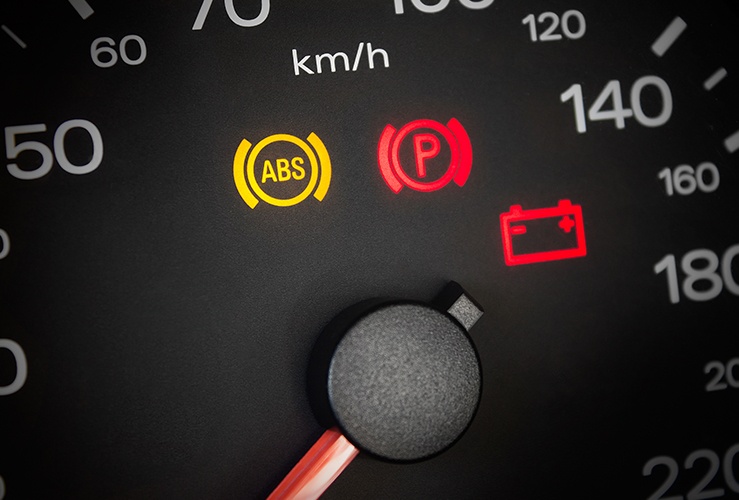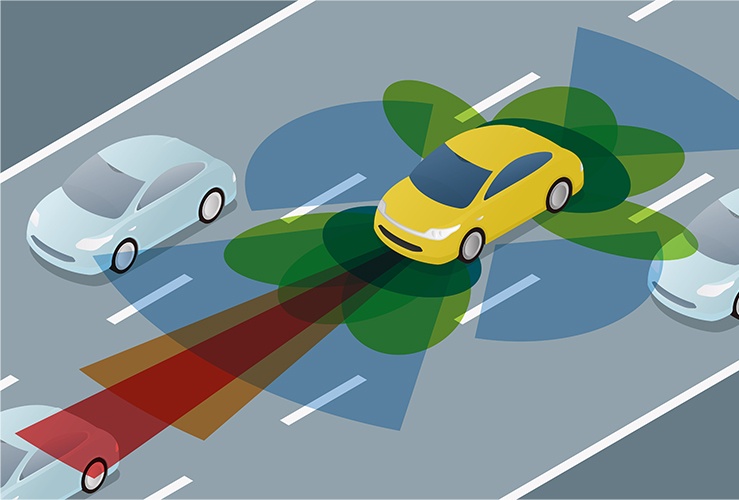By helping to prevent wheel-lock when brakes are applied, ABS has made modern driving safer than ever.
The anti-lock braking system (ABS) is an important safety feature found on most modern cars. Essentially, it prevents wheels locking up when the brakes are applied. It does this by modulating the braking pressure on a wheel if it is not turning at the same speed as the others, thereby ensuring the driver stays in control of their car.
ABS meaning in a car
So, what are anti-lock brakes? An anti-lock braking system in a car uses sensors near each wheel that monitor the speed of rotation. If it detects that one wheel is not turning at the same speed as the others while the brakes are being applied, it will modulate the brakes in the fashion outlined above. ABS in motorcycles works in a similar way, although there are some key differences - e.g. most motorcycles have separate brakes for front and rear wheels.
What would happen without ABS?
Without ABS, a motorist might lose control of their vehicle. This is a particular risk on wet or icy surfaces. ABS helps keep the driver and their passengers safe, as well as other road users - and pedestrians.
How are they different from regular brakes?
What does ABS do that’s so different from traditional brakes? With regular brakes, the driver is in complete control of the braking system. Brake timing and pressure are completely dictated by how the driver depresses the brake pedal - and can lead to locked wheels, which in turn can lead to the loss of vehicle control.
But with ABS, the braking signals from the driver are modified by the ABS computer, based on real-time information from the ABS sensors - which monitor wheel speed. ABS therefore makes it easier to maintain control of a vehicle, even when the driver applies the brakes heavily.
Are ABS brakes better or worse than traditional brakes?
Because traditional car braking systems can lock up when brakes are applied, they are considerably less safe than ABS brakes, which apply 'rhythmic' pressure to the brakes - allowing them to turn in a more controlled manner.
How to use anti-lock brakes
With ABS brakes, you simply apply firm and continuous pressure to the brake pedal. However, if your vehicle only has rear ABS, it's possible the front wheel will lock up. To prevent this, ease pressure on the brakes a little so the front wheels can turn.
When the ABS is applied, don't forget that you are still in control of the vehicle and must steer in the appropriate direction. And don't worry if you feel vibrations and hear noises; this lets you know the ABS is working as it should.
Additionally, avoid 'pumping' the brakes - as this is what the ABS system will do for you - but in a more controlled and effective way.
How do ABS brakes go wrong and what's the danger?
In rare cases, the ABS car braking system remains switched on when it should be off. This leads to overly sensitive braking and, ironically, can cause the wheels to lock up. The result may be that the vehicle comes to a sudden stop, which can be dangerous - for the driver, passengers, and other road users.
Can you still drive with an ABS fault?
If the ABS light remains on, caution should be exercised, since there is a danger of wheel lock-up, making manoeuvring more difficult - especially in an emergency. You should have your ABS serviced by a professional as soon as you can.
If your brake warning light comes on alongside the ABS warning light, you have a serious fault - and you should not drive your vehicle.
Common reasons your ABS warning light is illuminated:
- ABS module fault
- Low brake fluid
- Faulty wheel speed sensors
- ABS system is off
What should you do if your anti-lock brakes (ABS) warning light stays on?
If your ABS warning light stays on, you should visit a service center as soon as possible.
On what type of road surface may anti-lock brakes not work effectively?
There are certain road surfaces on which your ABS may not work as required. These include:
- Roads covered in fresh snow
- Damaged or potholed roads
- Gravel tracks/roads
- Icy roads
If you encounter any of these surface types, exercise extra caution. Drive slowly, and operate your accelerator and brakes smoothly and steadily.
Maintaining your brakes
Your brakes are arguably the most important safety feature on your car. As such, you should care for them in the following ways:
Check brakes often
- Undertake regular inspections to ensure brake pads are not worn. Aim to do this every few months - and certainly if you detect issues with the braking, such as juddering or reduced braking effectiveness. Take your vehicle to a mechanic if you believe the brakes are not working as they should be. You should also inspect the rotors and replace the brake fluid at least once every two years.
Bleed your brakes
- Air can get into your braking system over time - indicated by 'spongy' brakes. But by bleeding your brakes (replacing the brake fluid), you'll remove these air bubbles. Consult your manual on how often you should bleed your brakes (the recommended period is usually every two years).
Don't ‘ride your brakes’
- 'Riding your brakes' is when you depress your brakes and continue to drive without fully releasing them. This can wear out your brakes faster than they otherwise would.
Avoid overloading your vehicle
- Don't carry more weight than you need, since this can put extra braking pressure on pads and rotors. An overloaded vehicle won't brake as promptly as it should, and overheating may occur.
Avoid aggressive driving
- Sharp acceleration and heavy braking will, over time, wear out your brakes sooner than they otherwise would. Stick to the Highway Code and all other rules of the road. Anticipate the road ahead, and accelerate and brake smoothly.
Pay attention to any odd noises
- Grinding, screeching, or squeaking from the brakes should not be ignored: it could mean you have an issue, and not acting on it promptly could be dangerous.
Invest in quality brake parts
- Don't be tempted to replace brake components with cheaper options - they could cost you more in the long run if you need to visit your mechanic more often due to premature part failures.
What is Autonomous Emergency Braking (AEB)?
Autonomous Emergency Braking (AEB) might be considered the next stage in the evolution of assisted braking technology. It works by detecting an imminent collision, then alerting the driver to the threat. If the driver does not act, the AEB system will be deployed, and the brakes will be activated.
AEB harnesses LIDAR (light detection and radar) or camera sensors - or some combination of both. This data, when collected alongside trajectory and speed, helps the AEB system determine if the emergency brakes need to be applied.
The operation of an AEB system will vary depending on the make and model - with some technologies being more advanced and sophisticated than others. Some offerings are better in urban driving, while others are more effective on the motorway.
Research group Thatcham states that AEB could save "1,100 lives and 122,860 casualties in the UK over the next 10 years."







